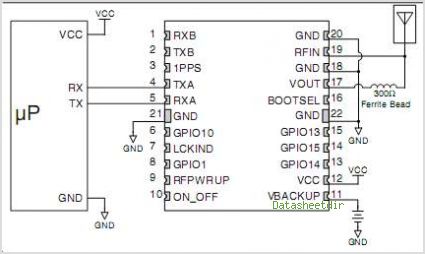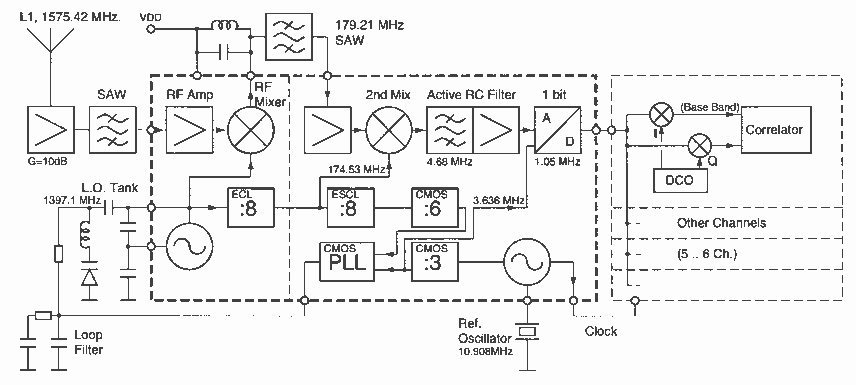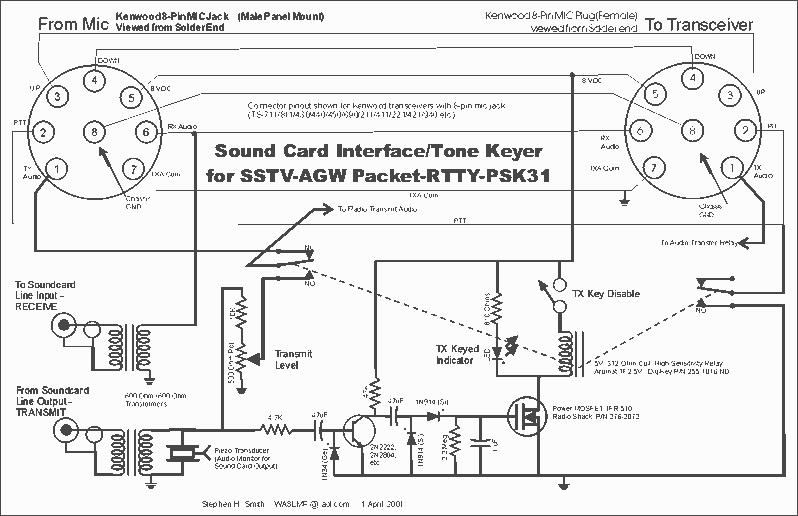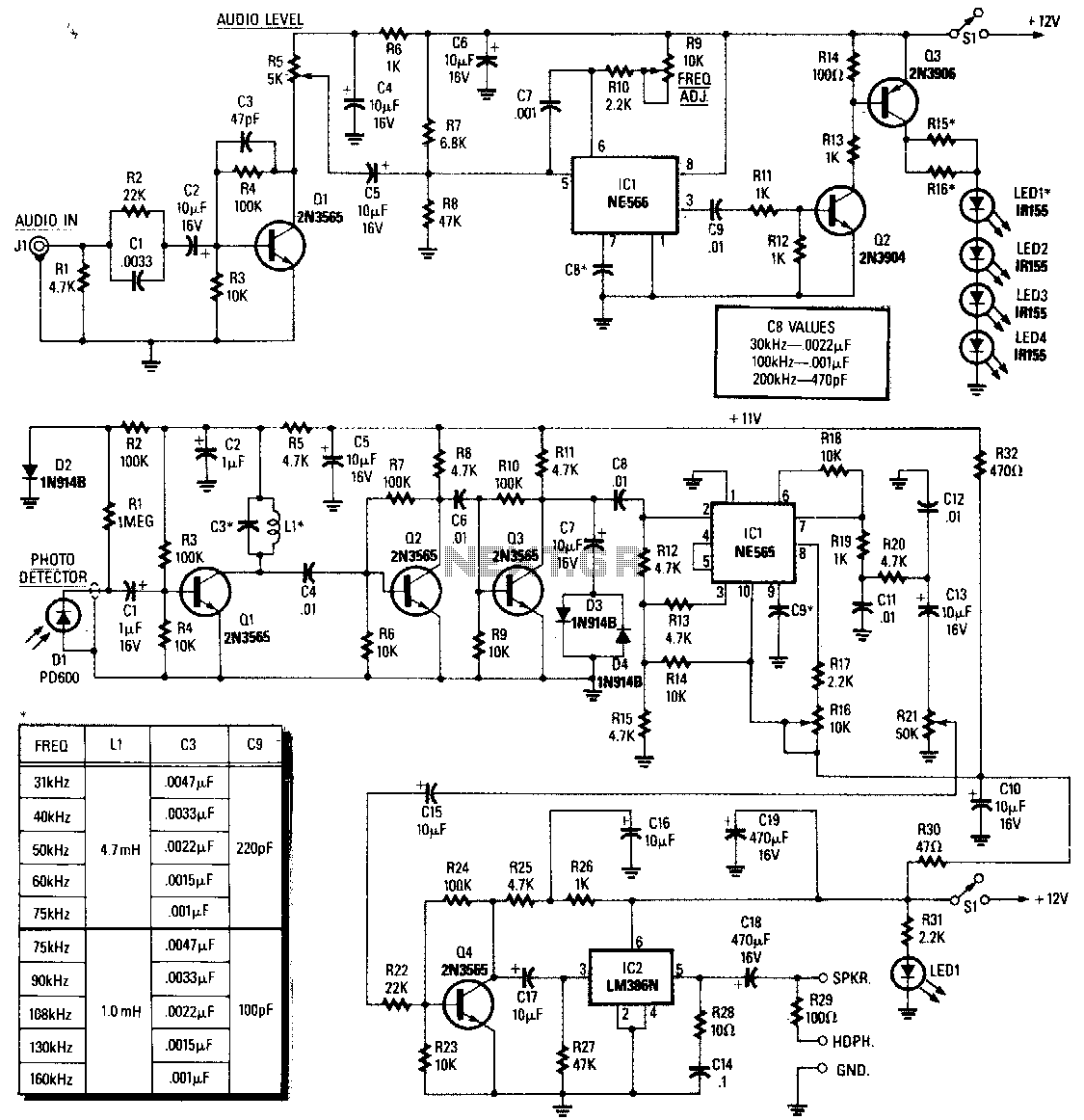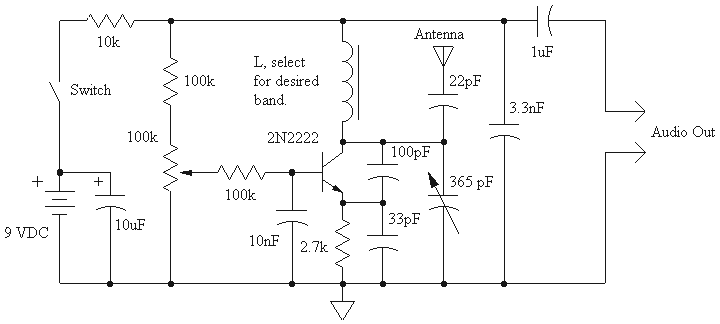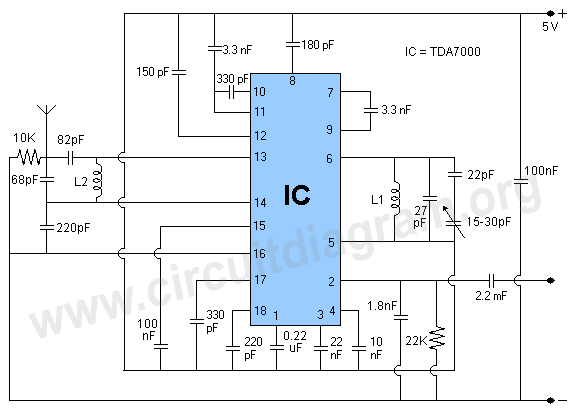
60 TO 72MHz VIDEO AND SOUND RECEIVER AND IF SYSTEM
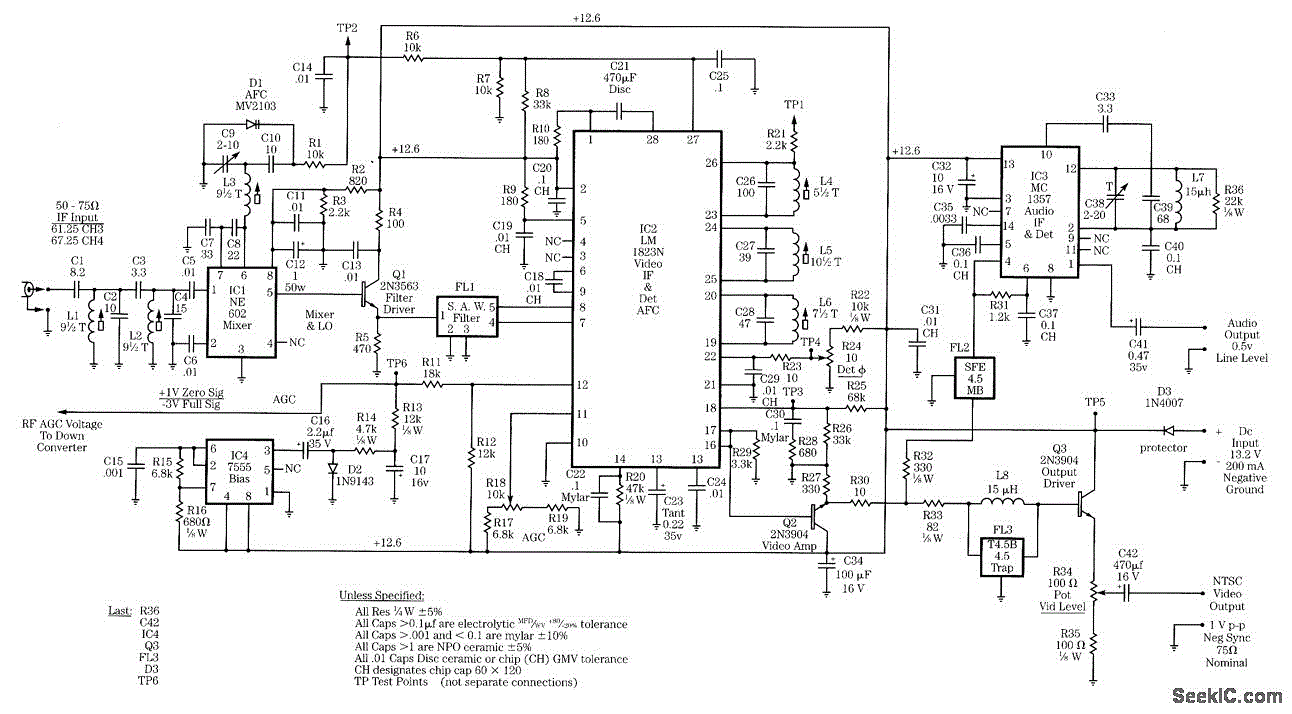
This intermediate frequency (IF) system employs a NE602 oscillator/mixer to convert VHF television signals ranging from 60 to 72 MHz (channel 13 or channel 4 under the U.S. NTSC standard) down to 45 MHz. A surface acoustic wave (SAW) filter is incorporated to provide bandpass filtering, followed by an LM1823 integrated circuit that handles video IF, automatic gain control (AGC), automatic frequency control (AFC), and detection. The recovered video signal is directed to a sound trap and a 4.5 MHz sound takeoff filter. The processed video is then sent to the output emitter follower stage.
The described IF system is a crucial component in the processing of VHF television signals, particularly for applications that require precise signal conversion and filtering. The NE602 oscillator/mixer serves as the heart of the system, effectively translating the incoming VHF signals to a lower intermediate frequency of 45 MHz, which is more manageable for subsequent processing. This frequency conversion is essential for reducing the effects of noise and interference that can impact higher frequency signals.
The SAW filter is instrumental in ensuring that only the desired frequency range is passed through, thereby enhancing the selectivity of the system. SAW filters are known for their high performance and compact size, making them ideal for modern electronic applications. Following the filtering stage, the LM1823 IC performs multiple functions, including amplification and demodulation of the video signal. The integrated nature of the LM1823 allows for a reduction in component count and simplifies the design.
The recovered video signal is then routed through a sound trap, which is designed to eliminate any unwanted audio frequencies that may interfere with the video signal. The 4.5 MHz sound takeoff filter extracts the audio component from the video signal, allowing for separate processing of the audio and video paths. Finally, the output emitter follower stage provides a high input impedance and low output impedance, ensuring that the video signal can be effectively transmitted to the next stage of the system without degradation.
Overall, this IF system exemplifies a well-engineered approach to VHF signal processing, integrating advanced components to achieve high performance in video and audio signal handling.This IF system uses a NE602 oscillator/mixer to convert VHF TV signals of 60 to 72 MHz (channe13 or channel4 under the U.S. NTSC) to 45 MHz. An SAW filter is used to provide bandpass filtering, followed by an LM1823 video IF/AGC/AFC/detector IC.
Recovered video is fed to a sound trap and 4.5-MHz sound takeoff filter. Video is fed to the output emitter follow.. 🔗 External reference
The described IF system is a crucial component in the processing of VHF television signals, particularly for applications that require precise signal conversion and filtering. The NE602 oscillator/mixer serves as the heart of the system, effectively translating the incoming VHF signals to a lower intermediate frequency of 45 MHz, which is more manageable for subsequent processing. This frequency conversion is essential for reducing the effects of noise and interference that can impact higher frequency signals.
The SAW filter is instrumental in ensuring that only the desired frequency range is passed through, thereby enhancing the selectivity of the system. SAW filters are known for their high performance and compact size, making them ideal for modern electronic applications. Following the filtering stage, the LM1823 IC performs multiple functions, including amplification and demodulation of the video signal. The integrated nature of the LM1823 allows for a reduction in component count and simplifies the design.
The recovered video signal is then routed through a sound trap, which is designed to eliminate any unwanted audio frequencies that may interfere with the video signal. The 4.5 MHz sound takeoff filter extracts the audio component from the video signal, allowing for separate processing of the audio and video paths. Finally, the output emitter follower stage provides a high input impedance and low output impedance, ensuring that the video signal can be effectively transmitted to the next stage of the system without degradation.
Overall, this IF system exemplifies a well-engineered approach to VHF signal processing, integrating advanced components to achieve high performance in video and audio signal handling.This IF system uses a NE602 oscillator/mixer to convert VHF TV signals of 60 to 72 MHz (channe13 or channel4 under the U.S. NTSC) to 45 MHz. An SAW filter is used to provide bandpass filtering, followed by an LM1823 video IF/AGC/AFC/detector IC.
Recovered video is fed to a sound trap and 4.5-MHz sound takeoff filter. Video is fed to the output emitter follow.. 🔗 External reference
